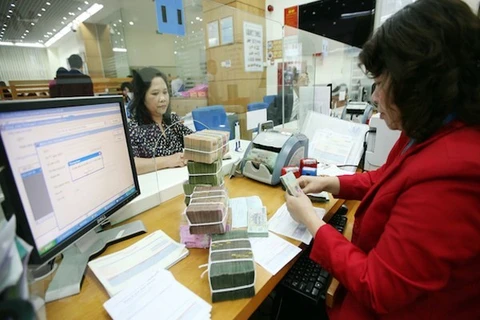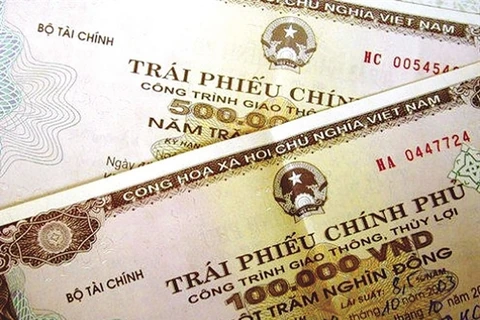Hanoi (VNA) – Improving global investment sentiment and financial conditions provided a much-needed lift for local currency bond markets in emerging East Asia, despite risks from the coronavirus disease (COVID-19) pandemic, says the latest issue, released on September 25, of the Asian Development Bank (ADB)’s Asia Bond Monitor.
Emerging East Asia consists of China, Hong Kong (China), Indonesia, the Republic of Korea, Malaysia, the Philippines, Singapore, Thailand, and Vietnam.
According to the Asia Bond Monitor, government bond yields in most emerging East Asian markets declined from June 15 to September 11 on the back of accommodative monetary policies and weakening growth across the region. Meanwhile, improving sentiment has led to gains in the region’s equity markets and a narrowing of credit spreads, with most regional currencies strengthening against the US dollar.
Local currency bonds outstanding in emerging East Asia reached 17.2 trillion USD at the end of June, up 5.0 percent from March this year and 15.5 percent higher than in June 2019. As a share of regional gross domestic product, emerging East Asia’s local currency bonds outstanding climbed to 91.6 percent at the end of June, from 87.8 percent in March, mainly due to the large amount of funding needed to fight the pandemic and mitigate its impact. Bond issuance in the region totaled 2 trillion USD in the second quarter, increasing by 21.3 percent from the first quarter this year.
China remained home to the region’s largest bond market, accounting for 76.6 percent of the region’s total bond stock as of the end of June.
[New regulations about corporate bond issuance]
ADB Chief Economist Yasuyuki Sawada said: “Governments in the region have been agile in dealing with the impact of the COVID-19 pandemic through a wide range of policy responses, including monetary easing and fiscal stimulus. It is crucial that governments and central banks maintain accommodative monetary policy stances and ensure sufficient liquidity to support financial stability and economic recovery.”
The region’s government bonds outstanding reached 10.5 trillion USD at the end of June and accounted for 60.8 percent of the region’s aggregate bond stock. Corporate bonds, meanwhile, totaled 6.7 trillion USD.
A worsening and prolonged COVID-19 pandemic that could further dent the region’s economic outlook – ADB is projecting a 0.7-percent contraction for developing Asia in 2020 – Is the biggest downside risk to financial stability. Other risk factors include potential social unrest due to the pandemic’s economic impact, as well as continuing tensions between China and the US.
Regarding Vietnam, the country’s total local currency bonds outstanding declined 1.7 percent quarter-on-quarter to 1,349 trillion VND (58.2 billion USD) at the end of June, reversing the 10.4-percent quarter-to-quarter gain in Q1 2020. The quarterly contraction in market size was due to lower outstanding debt in the government sector even as the corporate bond stock increased.
The government bond segment contracted 7.8 percent quarter-on-quarter to 50.1 billion USD in Q2 2020, accounting for a larger share of Vietnam’s bond market at 86.2 percent.
Corporate bonds posted growth of 65.6 percent quarter-on-quarter and 76 percent year-on-year in Q2 2020, bringing the total outstanding amount to 187 trillion VND at the end of June.
The significant increase was due to more data sources on Vietnam’s corporate bond market being used by AsianBondsOnline. At the same time, corporates were active in mobilising funds through bond issuance during the quarter as they reopened operations after pandemic restrictions were lifted. Also, an upcoming regulation that will raise the standards in the corporate bond market and result to stricter issuance guidelines made issuers rush to the bond market before it becomes effective on 1 September, according to ADB.
The third issue of ADB’s Asia Bond Monitor this year includes four discussion boxes. These examine recent trends and changes in the investor profile in local currency bonds markets in Asia; the increased use of digital payment amid the COVID-19 pandemic; the growth of environmental, social, and governance (ESG) investments in the region amid COVID-19; and the resilience of ESG investments during the pandemic./.

























